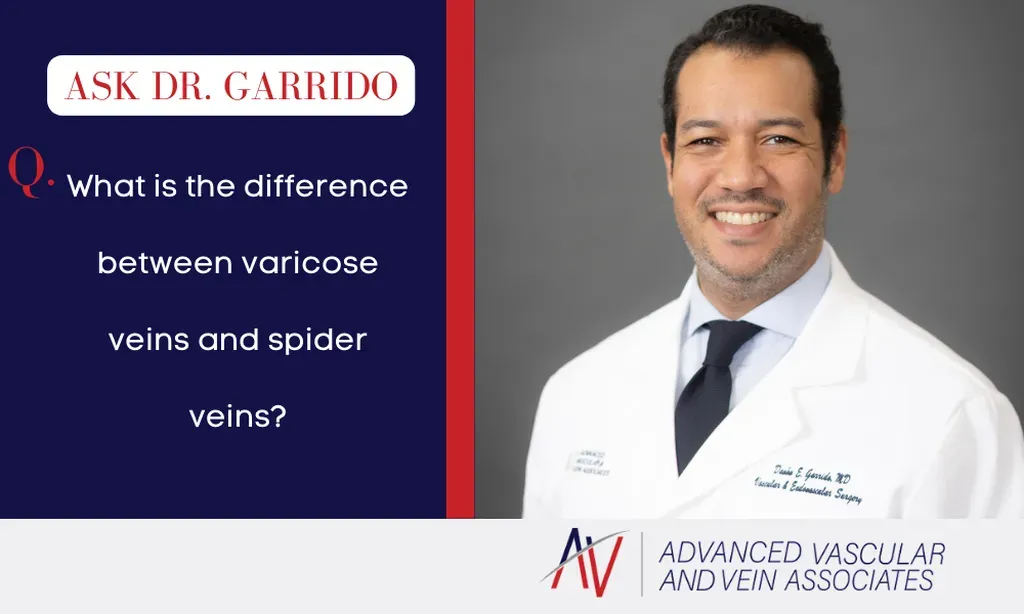Varicose Veins vs. Spider Veins

Varicose and spider veins are similar, but they have different causes and treatments. If you're not sure what kind of vein disorder you have, read on to learn more about the difference between varicose veins and spider veins.
Varicose Veins vs. Spider Veins
Introduction
Varicose and spider veins are similar, but they have different causes and treatments. If you're not sure what kind of vein disorder you have, read on to learn more about the difference between varicose veins and spider veins.
What are varicose veins?
Varicose veins are swollen and twisted veins that appear blue or purple. They can cause pain, itching and aching in the legs. Varicose veins are caused by increased pressure in the veins because of poor circulation.
There are two types of varicose veins: superficial (surface) and deep seated. Superficial varicose veins may cause no symptoms but can become inflamed if they become too large or when an injury occurs on top of them. Deep seated varicose veins run deeper into your leg muscles and aren't visible on the surface of your skin unless they bleed or become inflamed due to an injury.
What are spider veins?
Spider veins are smaller than varicose veins, and they're closer to the surface of your skin. Spider veins usually appear as small red or blue lines on your legs. They're more common in women than men because of their hormones, but both genders can develop spider veins if they have a family history of them or if they sit for long periods at work or in front of a computer screen. Spider veins are a common problem. They're a result of damaged valves in the veins, which cause blood to pool and form tiny red or purple lines on your skin. Sometimes these spider veins are visible only when you're standing up, but other times they can be seen even when you're sitting or lying down.
Spider vein symptoms include pain, itching and swelling (see below). If you have spider veins that cause bleeding from time to time, it's important to contact your doctor because this could indicate an underlying medical condition such as varicose veins or venous insufficiency (which refers to inadequate return of blood from the lower extremities back into heart).
How to treat varicose veins and spider veins
- Compression stockings are the most common way to treat varicose veins. They're worn around your calf and thigh, compressing the blood vessels that run through your legs and reducing swelling.
- For a permanent and faster solution, varicose veins can be treated with VenaCure EVLT laser therapy. VenaCure EVLT fires a laser fiber inside and along the length of the damaged vein. The laser energy heats the blood, which affects the vein wall, shrinking them closed so that blood can no longer flow through.
- Laser treatment is also used to target spider veins on or under the skin's surface; this method can be used for both small and large veins. You may need more than one session before you see results, but it's worth it if you want a permanent solution.
- Spider vein treatment options also include injections with sclerotherapy (a liquid injected into the vein which causes it to collapse) or thermal ablation (using radiofrequency waves).
Conclusion
Varicose veins and spider veins are similar, but they are not the same. The main difference is that varicose veins are caused by a problem in the vein itself, while spider veins are caused by a small tear in the wall of the vein. Both conditions can cause similar symptoms like itching, swelling and pain in your legs or feet. If you think you have one of these conditions then it's important to see your doctor so they can diagnose it properly before recommending treatment options.
About Advanced Vascular & Vein Associates
Advanced Vascular & Vein Associates in Flowood, Mississippi, is the first outpatient-based laboratory in Central Mississippi. The practice, led by vascular surgeons Dr. Danón Garrido and Dr. Rishi Roy, is proud to provide life-changing, cutting-edge vascular care to a population and region that has not had easy access in the past. Services at Advanced Vascular & Vein Associates include highly effective minimally invasive treatments for peripheral artery disease (PAD), chronic venous insufficiency (CVI), varicose veins, carotid artery disease, arterial occlusion, and deep vein thrombosis (DVT or blood clot). Their diagnostic services are also available onsite for convenience.
